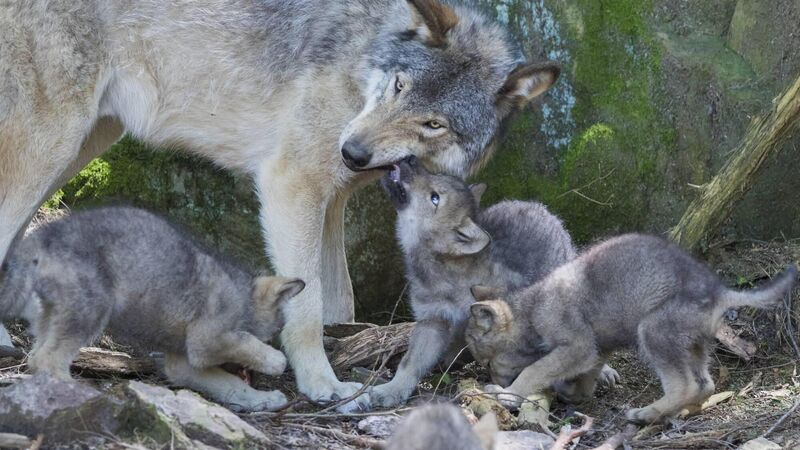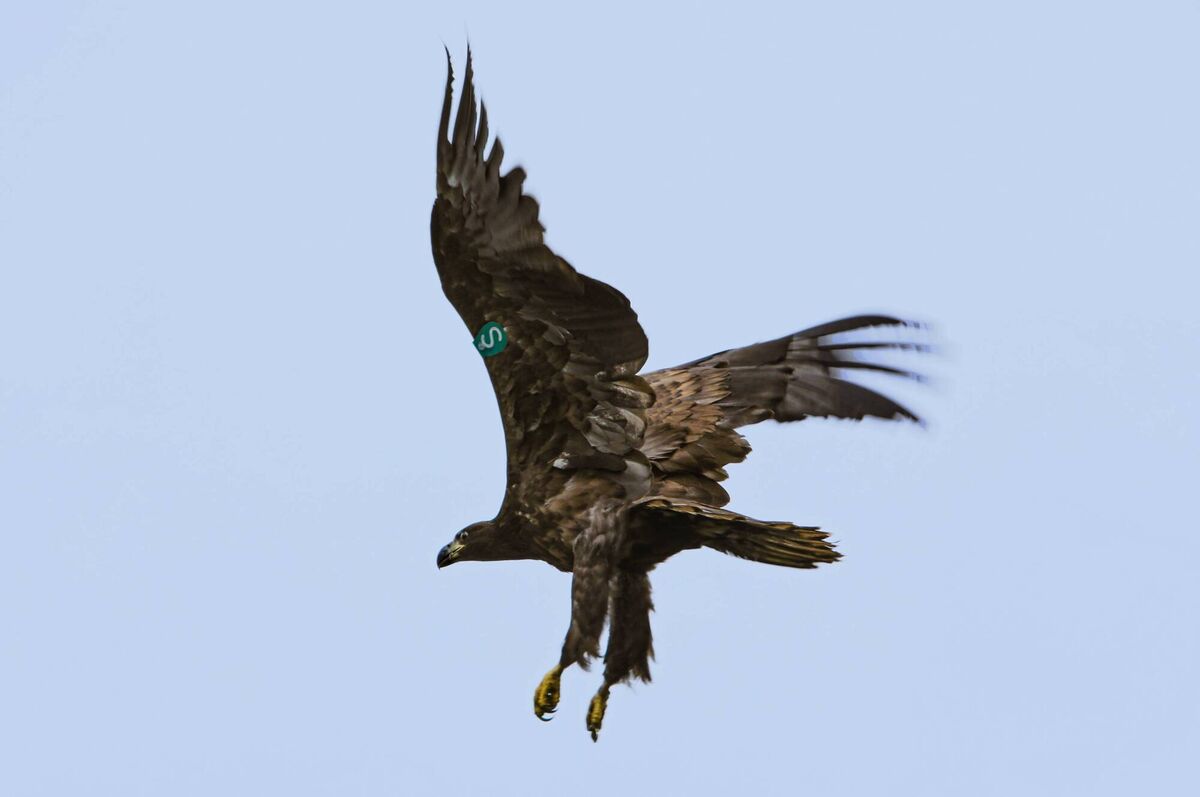From bears to grey wolves, Europe's persecuted carnivores are bouncing back

The population of grey wolves in Europe has increased by 1,871% over recent decades.
Despite numerous warnings that sound like the "final nails in the coffin" of biodiversity across Europe, there are heartening examples of European wildlife bouncing back from the brink.
For the past two years, we at the Zoological Society of London’s Institute of Zoology, along with colleagues at BirdLife International and the European Bird Census Council, have been investigating the fortunes of 50 European wildlife species over the past 50 years, from humpback whales to Iberian wild goats to white-tailed eagles.
Each of these species are incredible comeback stories, and researching how they have recovered has been a refreshing and inspiring endeavour — the Eurasian beaver and European bison, for example, have both increased in average relative abundance by more than 16,000% since 1960.
Among the 50 species we followed, all five of Europe’s large carnivores — brown bears, grey wolves, Iberian and Eurasian lynxes, and wolverines — showed increases in their average relative abundance over recent decades, from a 44% increase for brown bears to a 1,871% increase for grey wolves.

Now, while it might sound counterintuitive when referring to predatory species, the increase and expansion of large carnivores across Europe is actually positive for biodiversity and for the health of our wider ecosystem.
Through predation and scavenging, they also contribute to vital ecosystem processes such as nutrient cycling and carbon-storing processes, and can help control disease and invasive species.
What’s more, large mammal species (both carnivores and herbivores) significantly influence the structure and composition of natural habitats.
These factors all contribute towards boosting the capacity of an ecosystem to withstand changes and diversifying the provisioning services upon which we depend.
Increases in large fauna, especially carnivores, are exciting for Europe. Grey wolves, brown bears, wolverines, and Eurasian and Iberian lynx were hunted and persecuted, affected by habitat loss and fragmentation and, as a result, suffered severe declines until around the mid-20th century.
Centuries of agricultural expansion and industrialisation, in addition to hunting, have dramatically changed the shape of Europe’s nature.
With so many degraded habitats, and one in nine species in Europe threatened with extinction, wildlife has had to adapt. Many species have retreated into refugia — islands of wild spaces within human-modified landscapes.
This was the trajectory for most of Europe’s large carnivores — persecuted and hunted to near eradication — so it has been remarkable to examine their comeback.

But what has made these remarkable recoveries possible? Our team found legal protections were key to species' survival across the board.
For the birds in our report, habitat protection and restoration, as well as reintroductions and translocations, were important factors in their recovery, while for mammals, the top factors were natural expansion, recolonisation and species ecology.
However, the comeback of large carnivores can bring opportunities for local employment and investment through wildlife tourism. Participatory approaches, financial compensation schemes, education programmes and policies to support communities as they transition towards coexistence with these revived carnivores are vitally important for acceptance.
These challenges are not new, or unique: coexistence with wildlife is a global issue, one which is increasingly important to work towards if we want to bend the curve of biodiversity loss and meet commitments to confront the climate crisis.

For some of these species, such as the Iberian lynx, their recoveries remain highly conservation-dependent, and ongoing work will be vital to ensure their fragile positive trajectories are maintained to become self-sustainable.
For others, the ability to adapt and tolerate human activity sets them up well for recoveries with minimal interventions, as long as they have the space they need, and any pressures on them are kept in check.
It is timely to highlight the importance of ongoing legal protection and environmental policies, which have been vital to the recovery of many if not most of the birds and mammals within the study.
EU nature directives and long-established environmental legislations have allowed continuing legal protections for species and habitats, and provided an enabling environment for wildlife to recover.
Commitments to ongoing protective measures and ecosystem regeneration are key to improving biodiversity and making meaningful steps towards a bright future for nature and people.
For now, these impressive recoveries, largely enabled through legal protections, are a positive reminder that even from dire situations, wildlife can recover — if we let it.
- Sophie Ledger is a researcher at the Zoological Society of London’s Institute of Zoology and lead author for the 2022 Wildlife Comeback report












